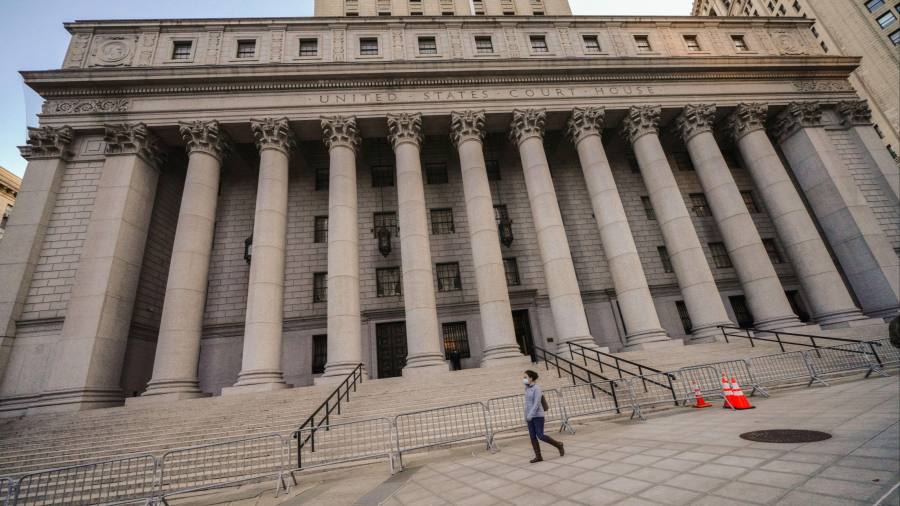
Judges, as it turns out, do not always appreciate being told by lawyers in their courtroom what they may rule on.
A series of private equity-backed companies raised rescue capital in 2020 by allowing a subset of existing lenders to jump ahead of other lenders in claiming collateral in exchange for the fresh cash.
Such deals eventually would come to be colloquially known as “creditor on creditor violence” since a slim majority of hedge funds that held a company’s loans could jump in priority for repayment while leaving the disfavoured group stuck holding distressed debt.
Several of those deals have landed in New York state court, where judges are being asked to determine if debt contracts ultimately allow for priority of lenders to be rearranged without the unanimous consent of all the existing lenders.
Yet, these refinancings have also featured another inflammatory element. The favoured group changed the loan contract’s so-called “no-action” clause. These standard clauses govern when a creditor is allowed to sue after they believe they have been harmed by the company.
In a highly anticipated ruling earlier this month, involving the Oaktree Capital-owned retailer Boardriders, New York state judge Andrea Masley said that the company’s owners had “sufficiently alleged that [the no-action clause] was amended in bad faith to prevent plaintiffs from suing to enforce their rights”. Among the amendments to the no-action clause, the suing creditors were told to put up the cash needed to litigate the dispute upfront into an escrow account.
Many lawyers note that no-action clauses are generally sensible to prevent chaos. Typically, a minimum number of creditors — say 25 per cent — would have to agree to file a lawsuit against a company over a lending dispute, and additionally the clause would sometimes demand that any lawsuit be brought by the bank that administered the loan.
But in these 2020 deals, where an aggressive reordering of capital stack might be permissible, amending the no-action clause to additionally make it almost impossible to sue was just asking for trouble with the court.
“Aggressively trying to shut down litigation was clearly offensive to the judge and unnecessary,” said one top lawyer.
The drama around the no-action clause has highlighted just how aggressive lawyers have been in designing complex financing transactions. Even those involved in the ruthless world of corporate restructuring who are not offended by creditor-on-creditor violence are concerned about provoking judges. One lawyer said, if a refinancing deal is permissible under a contract, a company and its lawyers should feel comfortable they can prevail in a legal dispute over it without resorting to attempts to short-circuit a lawsuit.
Another lawyer, Randall Klein of Goldberg Kohn, wondered how far lawyers will take no-action clause aggression. “If the amended docs say you must sacrifice your first born to sue the majority, is that too extreme?” he said.
When it comes to pointing at Congress, however, one prominent bankruptcy judge is desperate for some help. Creditors of a bankrupt US grocery chain, Tops, have sued the chain’s one-time owner, the private equity arm of Morgan Stanley. Morgan Stanley had taken out hundreds of millions in dividends prior to Tops’ failure and those creditors are now seeking to unwind those payments.
Morgan Stanley’s defence includes relying on a crucial but esoteric section of the US bankruptcy code known as 546(e). Congress had enacted 546(e) as a “safe harbour” so that certain financial transactions, such as the settlement of derivatives, could not be reversed because doing so would put at risk systemic financial stability. The problem with 546(e), however, is that private equity firms have been able to rely on its usually generous interpretation to shirk accountability when their payouts trigger a bankruptcy.
In deciding to send the Tops dispute to trial, the longtime and soon-to-be- retired federal bankruptcy judge Robert Drain took an extraordinary shot at private equity firms when asking for legislative assistance in attempting to hold those players accountable. “Given the importance of fraudulent transfer law in bankruptcy cases, Congress should act to restrict to public transactions its current overly broad free pass in section 546(e) that has informed the playbook of private loan and equity participants to loot privately held companies.”
The lesson for lawyers then is if judges need advice themselves, the firms will be sure to ask.